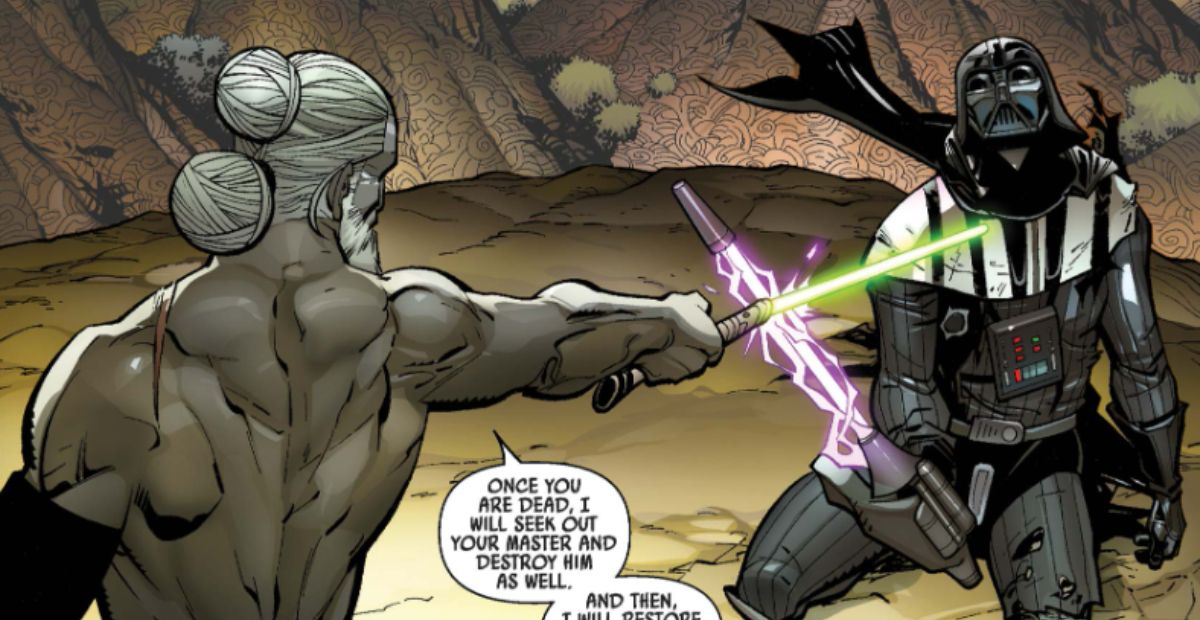In Episode 2 of The Acolyte, audiences saw a Jedi practicing the Barash Vow. Although not completely new to the Star Wars universe, the Barash Vow is new to live-action shows.
The Acolyte is thus innovative in reflecting this aspect of the Jedi Order.
But, what is the Barah Vow? It is an alternate path for the Jedi that is meant to bring atonement for the wrongs of the past.
The Barash Vow
As a straight definition, the Barash Vow is an oath that the Jedi take that removes them from the Jedi Order.
The vow is taken as a form of penance, and those who take it refrain from any “activities” with the Jedi. Through meditations, vow-takers commit themselves entirely to the Force.
The Jedi Master Barash Silvain is the first Jedi to take the vow and provides the name for it.
As a Kage female Jedi Master, Silvain “vowed to remove herself from the Jedi” to atone for a mistake she made in a mission.
She sought to commune with the Force after a failed mission with fellow Jedi Porter Engle that occurred before the timeline of The Acolyte.
Like Master Tobin in The Acolyte, Silvain felt responsible for the loss of lives and wished to recommit herself to the Force.
The Barash Vow thus became a way for some Jedi to follow an alternate pathway that solely focuses on the Force.
The term arose in the Darth Vader comic series, which relays that thousands of Jedi took the vow. As an article on Star Wars clarifies, those who take the vow still remain Jedi, “but voluntarily choose to temporarily stop taking action on behalf of the Order.”
They could be described as Jedi in-waiting, self-removed, listening to the Force to “better understand themselves,” as author and creator of the Barash Vow, Charles Soule, conveys.
This secretive, secluded vow-taking is a new element for the small screen, but an existing part of the Star Wars universe.
The Barash Vow represents tapping into Jedi history and centering the Force as a mystical and mysterious energy and power that pervades the galaxy.
Since it means putting aside the world around the Jedi, the oath provides dimensions of the Jedi that are not regularly portrayed.
The Acolyte and the Barash Vow
In the second episode, we saw Jedi Master Torbin in meditation in the Jedi Temple because he took the Barash Vow.
Torbin pursued this alternate path after the fire that had presumably killed Mae Aniseya, the twin sister of Osha. He secluded himself away in atonement for what had gone wrong.
As one article explains, those who take this vow remove themselves from the Jedi so that they can “better focus on the will of the Force itself rather than their own motivations and desires.”
The vow and mediation act like a cleansing power around the Jedi and a greater immersion in the Force.
The Acolyte depicts how Torbin is protected by an invisible Force shield when Mae attempts to attack him.
In The Acolyte, Jedi Torbin had secluded himself for years before Mae came into his chambers.
When he willingly takes the poison that Mae gives him, Torbin gives into a final absolution for presumed wrongs of the past. He appears to agree that he has committed a crime that validates ending his own life.
As this article relates, The Acolyte appears to be going “deeper into Jedi lore” than other series have done.
By drawing on the comics, this show appears willing to tap into the archival record of the Jedi and their legends to bring the High Republic to life.
The Acolyte is attempting to provide different angles for understanding the Force and different pathways that the Jedi might take.
Who Else Took the Barash Vow?
Several Jedi are known to have taken the Barash Vow. During the High Republic, human male Jedi Dez Rydan was believed to have died on a mission but was trapped and tortured by plant-like creatures who could corrupt the minds of Jedi.
Once rescued, Rydan seals himself off by taking the Barash Vow to recover his connection to the Force. Perhaps we will see an appearance of this Jedi in The Acolyte.
During the High Republic and the last years of the Galactic Republic, Jedi Master Kirak Infil’a also took the Barash Vow, which removed him from a life of active combat and enabled him to survive Order 66.
Once he ended his vow, Kirak fought Vader twice but perished in the second duel. We may also see this Jedi in the current Disney+ show.
We may also consider Obi-Wan Kenobi and Yoda’s exile following Order 66 as a type of Barash Vow. Both pursued the Force and became among the most powerful users.
Wookieepidia includes Kenobi with its description of the Barash Vow, indicating he “took and kept the ways of the vow” on Tatooine. We may think of Yoda doing similar things on Dagobah.
However, as depicted in the Obi-Wan Kenobi series, Obi-Wan was initially detached from the Force, not trying to bind himself closer to it.
Likewise, Yoda was hiding from the Empire, not willingly secluding himself. So, including these two Jedi in the vow takers is debatable.
The Barash Vow and Star Wars
The Barash Vow is a unique, monk-like seclusion from the Jedi to commune with only the Force. As Jedi Torbin, the vow is usually taken to atone for a grave mistake.
In all, we have four confirmed Barah Vow takers, and potentially six, if we include Yoda and Obi-Wan. If we include the full range of the Star Wars universe, we have thousands more.

